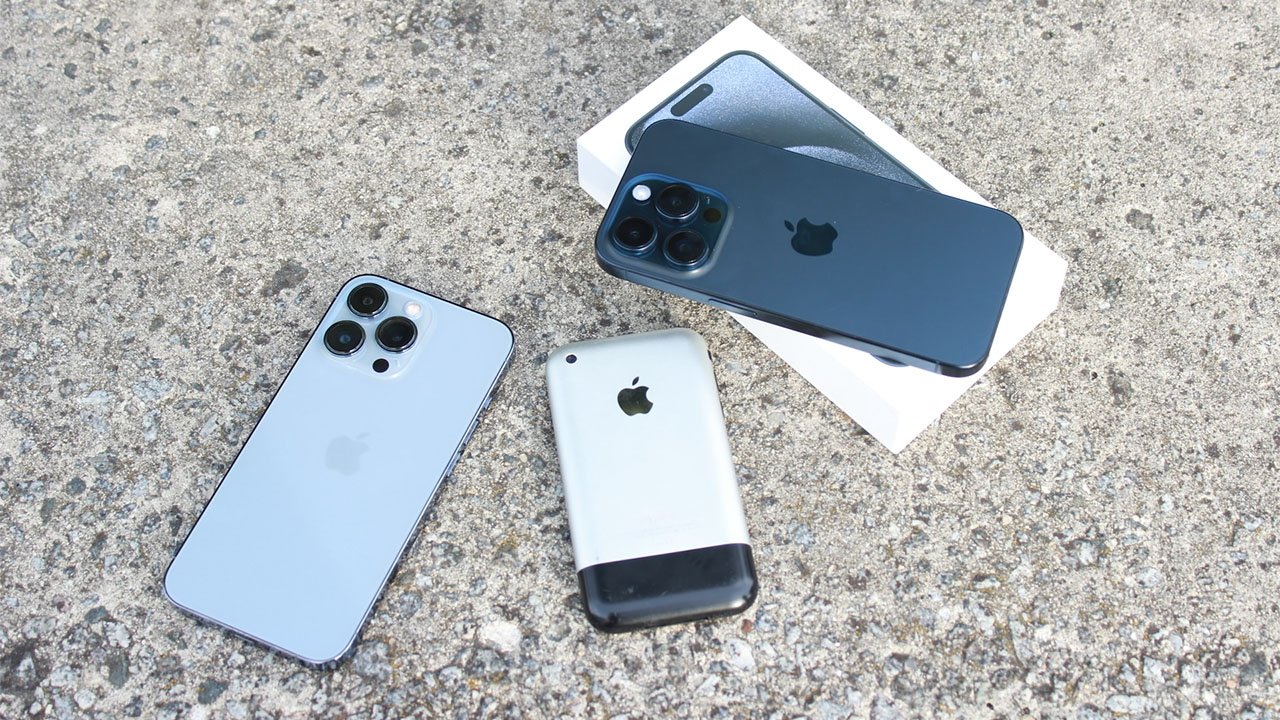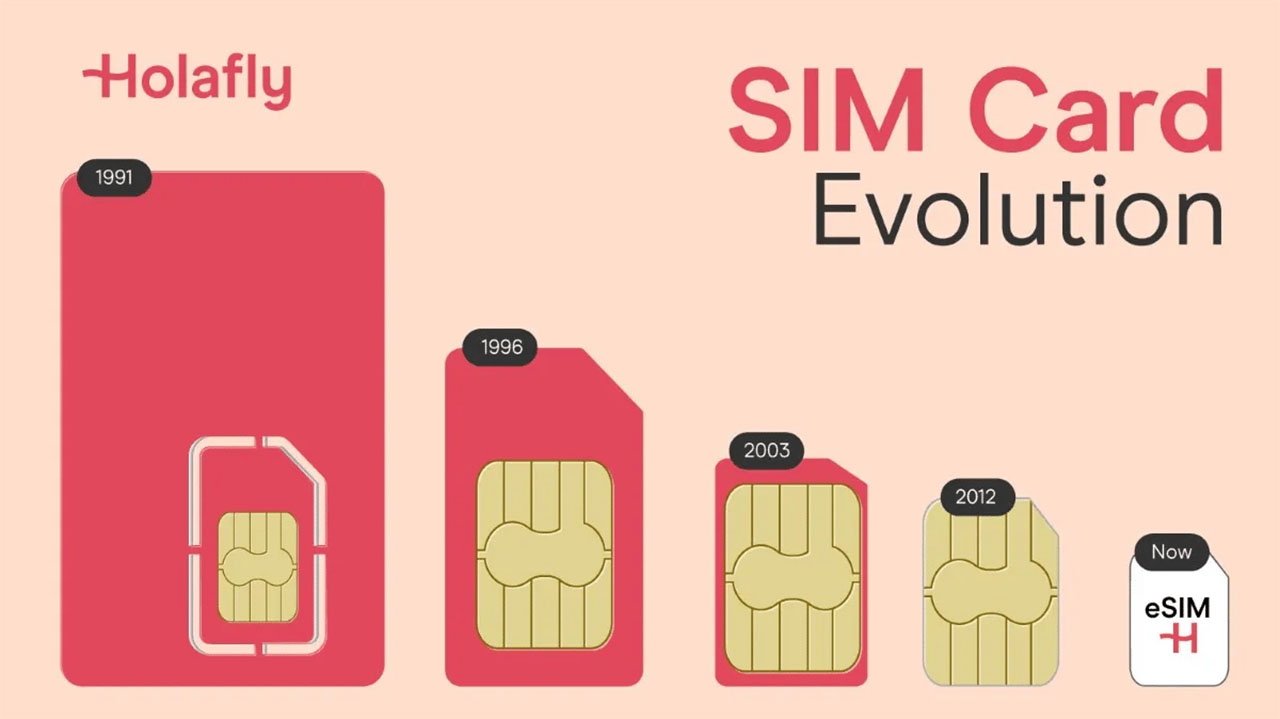Apple is a global leader in eco-sustainability with initiatives like removing leather, reducing plastic packaging, and introducing eSIMs to replace physical SIM cards. Here's the ultimate guide on eSIMs and how they complement the iPhone perfectly.

Apple is a prominent global leader in eco-sustainability, as evidenced by initiatives such as eliminating the SIM card slot, thereby reducing the use of plastic SIM cards. The company has introduced eSIMs as a replacement for physical SIM cards.
Moreover, these innovations simplify the process for iPhone users to effortlessly switch between local cell towers and international cellular networks, eliminating the need for physical intervention and streamlining the configuration of their cell phones within minutes.
An eSIM not only provides benefits in terms of local coverage but also excels in international travel. When abroad, an international SIM enhances your adventure by enabling seamless connectivity through a quick QR code scan in under a minute, regardless of your location.
This convenience helps you avoid exorbitant fees, unsecure Wi-Fi connections, and the hassle of long queues and paperwork for a traditional SIM card at the airport or physical stores. The eSIM is a game-changer, so let's delve in and join us in exploring the ultimate guide on eSIM for iPhone.
What is an eSIM?

Evolution of a SIM card.
A traditional SIM card is a plastic or PVC card with circuitry that contains the technology required to connect with cellular networks. An eSIM embeds that circuitry directly into the device's hardware, eliminating the need for separate cards. This lets you have all the control directly on your phone without needing an external device.
Since the release of Apple's iPhone 14 lineup, eSIM has been the standard, replacing the physical SIM card altogether. A number of other iPhone models support eSIM, including the iPhone XS, the iPhone 11, the iPhone 12, and the iPhone 13 lineup.
Local eSIM vs international eSIM on iPhone
Adding an eSIM on iPhone can be done in a few easy steps.
There are no fundamental differences between a local and a travel eSIM in terms of technology. Both support connecting to local cellular networks so you can access calling, texting, and data features.
However, the real difference comes down to billing and availability. For example, a traveler from the U.S. will have a local eSIM that connects to one of the major carriers, and travelers within the U.S. usually do not encounter roaming charges.
However, that same eSIM may support international roaming, allowing users to remain connected to networks wherever they are. But, these travelers are subject to carrier rates and fees, which could end up costing you hundreds, if not more.
On the contrary, opting for an international eSIM is a superior choice as it enables you access to international networks at a significantly lower cost. You can even enjoy unlimited data and local calls. Furthermore, iPhones support multiple eSIMs, permitting one for home use and another for international travel. This approach allows you to keep your local number installed but not activated for roaming while utilizing the international eSIM for use abroad.
Why an eSIM is better than a physical SIM card
SIM cards are an older concept in cellular devices, with the first Nokia phones utilizing huge SD-card-sized SIMs. As time and tech progressed, these physical cards became smaller, such as the MicroSIM and NanoSIMs that grace many modern smartphones.
Don't wait to get online by having a travel eSIM at the ready
The eSIM is just the latest evolution in the long chain of SIM cards. They are smaller than previous SIM cards and integrate seamlessly into device architecture, allowing for several key benefits, including:
- Reduced space requirements allow more room for other tech
- Prevents removed SIM if the device is lost or stolen
- Can't get lost when swapping cards
- Have multiple eSIM cards installed
Additionally, because eSIM cards are part of the overall circuitry of an iPhone, they last as long as the rest of the device. There is no need to swap out to a newer card, as there is nothing to wear out.
eSIM compatibility on iPhone
To verify the compatibility of your device with eSIM, you can choose between two methods: the shorter one and the longer one.
Shorter method: Check if your iPhone is included in the eSIM compatibility list.
Longer method: Navigate to Settings > General > About. Scroll down to "Available SIM" or "Digital SIM." If your phone is part of the eSIM elite, it will reveal a 15-digit IMEI number.
Apple products with eSIM compatibility
Several Apple devices are eSIM compatible, including:
- iPhone XS, XS Max, XR, or later
- iPad mini 5th-generation or later
- iPad 7th-generation or later
- iPad Air 3rd-generation or later
- iPad Pro 11-inch all generations
- iPad Pro 12.9-inch 3rd-generation or later
- Any Apple Watch with cellular capabilities
Not every carrier will support eSIM for older devices. Check with your carrier to verify the availability of eSIMs for anything older than the iPhone 14.
Benefits of eSIMs for travel
While eSIMs offer several benefits over their physical counterparts, as mentioned before, one of the most significant advantages is the ease of use during travel. eSIMs simplify the process of purchasing, installing, and activating cellular service on networks abroad with just a few taps.
Get Holafly eSIM for travel
Although swapping to another SIM card is convenient while traveling, many companies charge travelers exorbitant prices for cellular coverage. Holafly emerges as a much better option as your primary provider, offering eSIMs for as low as $1.20 per day with unlimited data. Additionally, you can obtain an eSIM for entire regions like Europe, Asia, or North America. For instance, if you plan to travel throughout Europe to different countries, the traditional approach would require you to acquire an eSIM or SIM card for each destination.
With Holafly's eSIM for Europe, you'll enjoy coverage in over 30 destinations with a single payment and even receive 60 minutes for local phone calls. The company offers plans ranging from five to 90 days, providing coverage over 180 destinations, with most of them including unlimited data. You can easily purchase these plans through their website or eSIM app.
How to set up your eSIM
- Go to Settings
- Tap Cellular or Mobile Data
- Tap Add Mobile Data Plan
- Tap Enter Details Manually
- Follow the instructions to enter the data
To make it easier, here you will find a quick tutorial.
How to remove eSIM from iPhone after use
Current iPhones have the capability to store up to 20 profiles, and you can use all of them. It doesn't mean you must keep all of them activated, occupying
space. As soon as you are back home, you can easily deactivate and free up space. Here is how to do it:
- Go to Settings
- Tap Cellular or Mobile
- Tap your eSIM line
- Select Remove Mobile Data Plan
Final thoughts on the iPhone's eSIM capability
The transition to eSIMs brings significant benefits to iPhone users regarding security, portability, and eco-sustainability. The adoption of eSIM technology enhances the security of user data by eliminating the physical SIM card, thereby reducing the risk of unauthorized access or loss. Moreover, the portability aspect is greatly improved, allowing users to easily switch between carriers and manage their mobile connections directly through the device settings.
From an eco-sustainability perspective, the shift to eSIMs contributes to decreased production and disposal of physical SIM cards, aligning with environmentally friendly practices. Additionally, with offerings like the international eSIM from Holafly, it is now possible to be connected worldwide within minutes, without the high fees associated with roaming charges from local carriers. So, all benefited from the eSIM; don't wait, join the eSIM wave, and leave the plastic and hassles behind.
